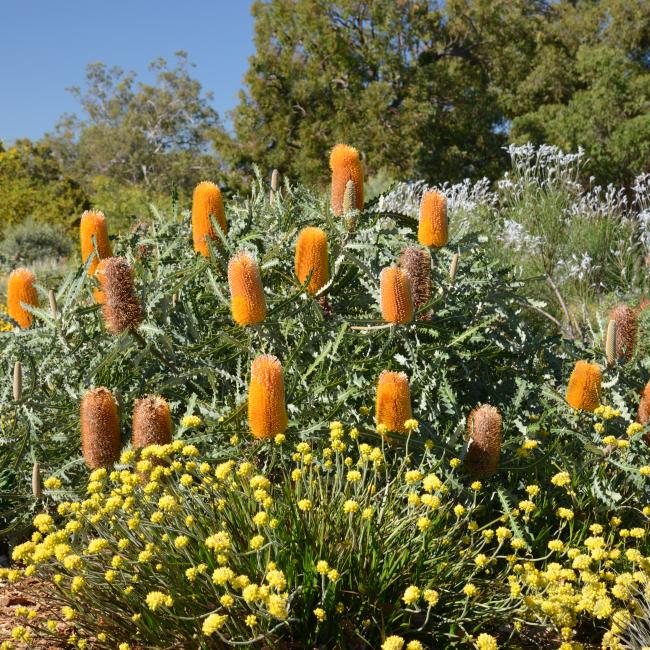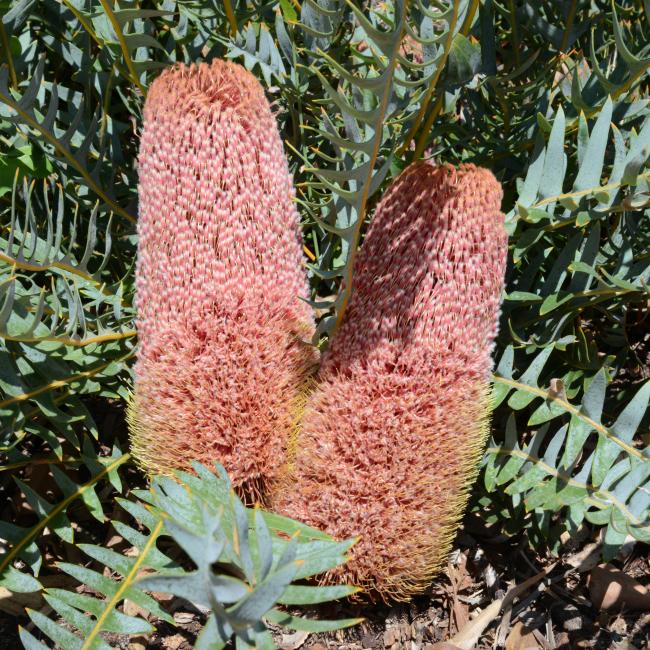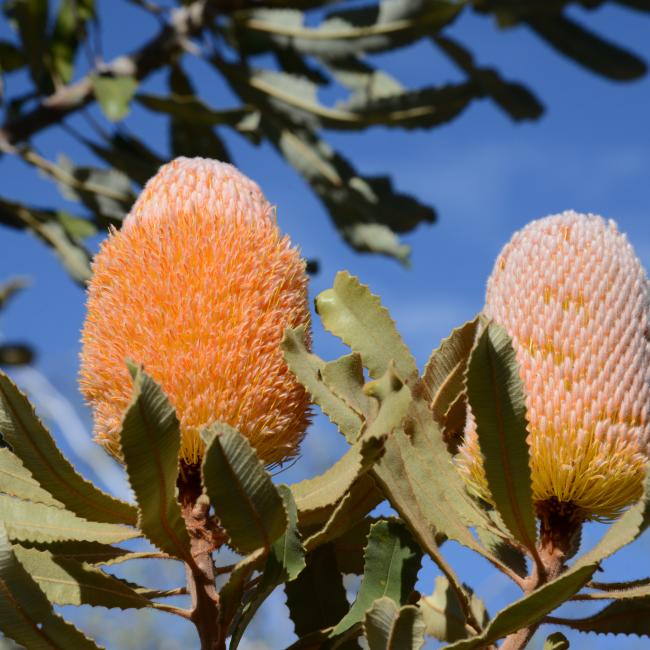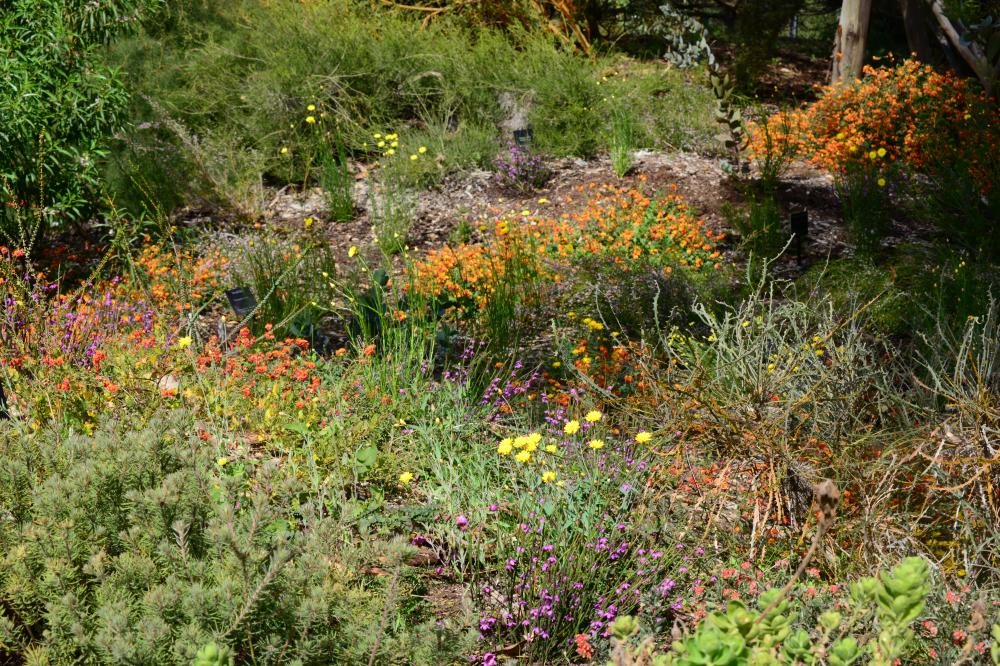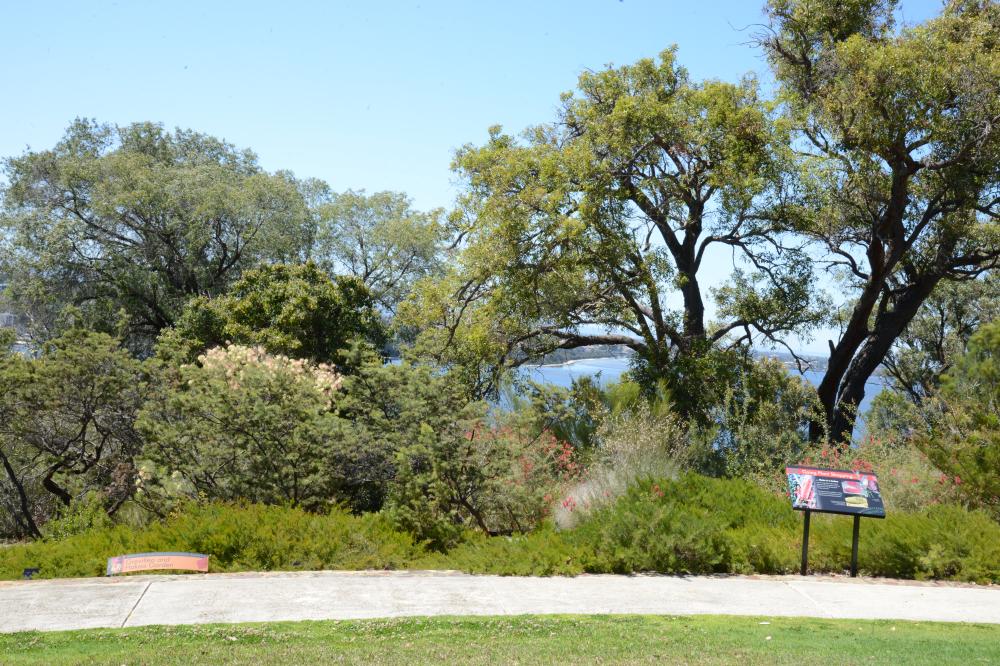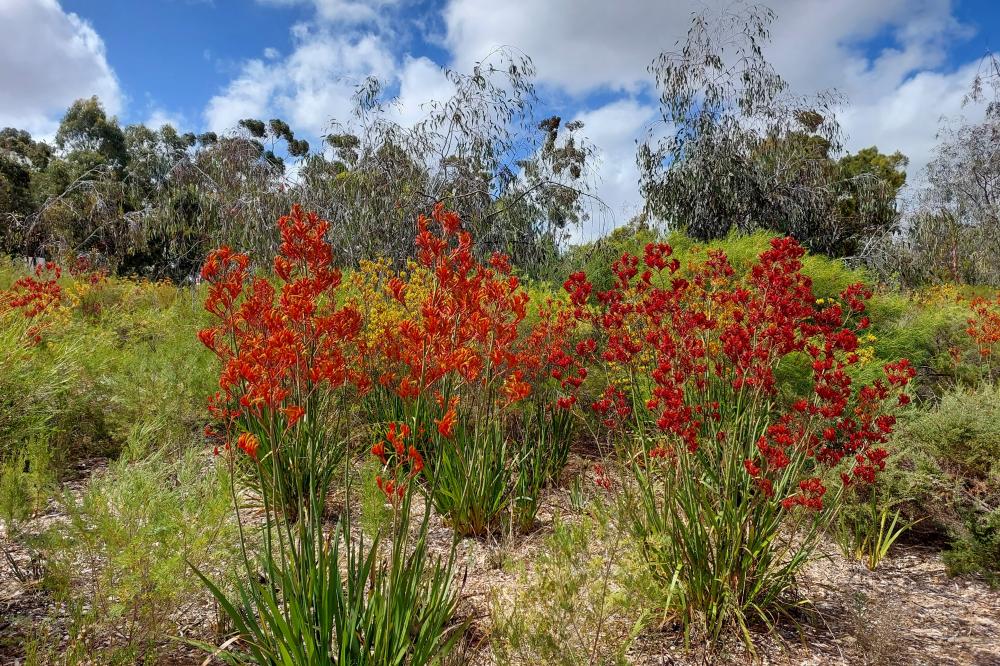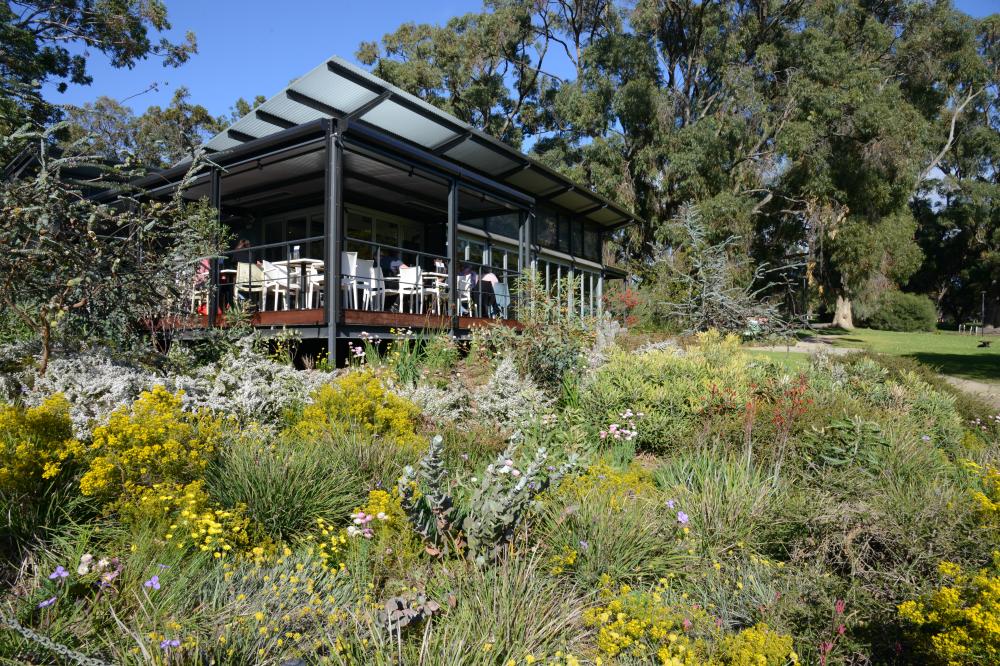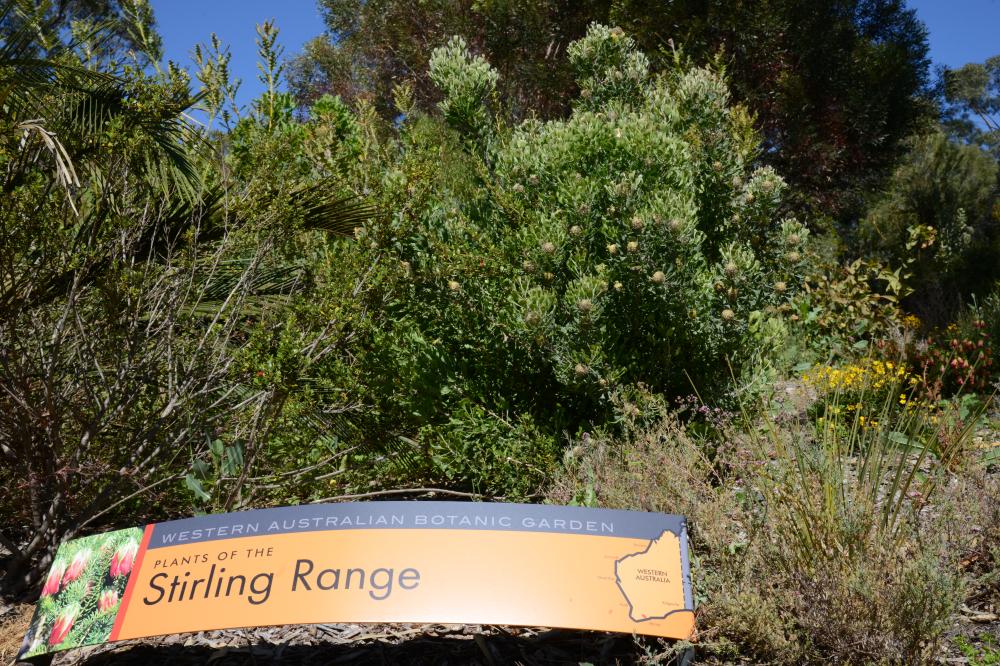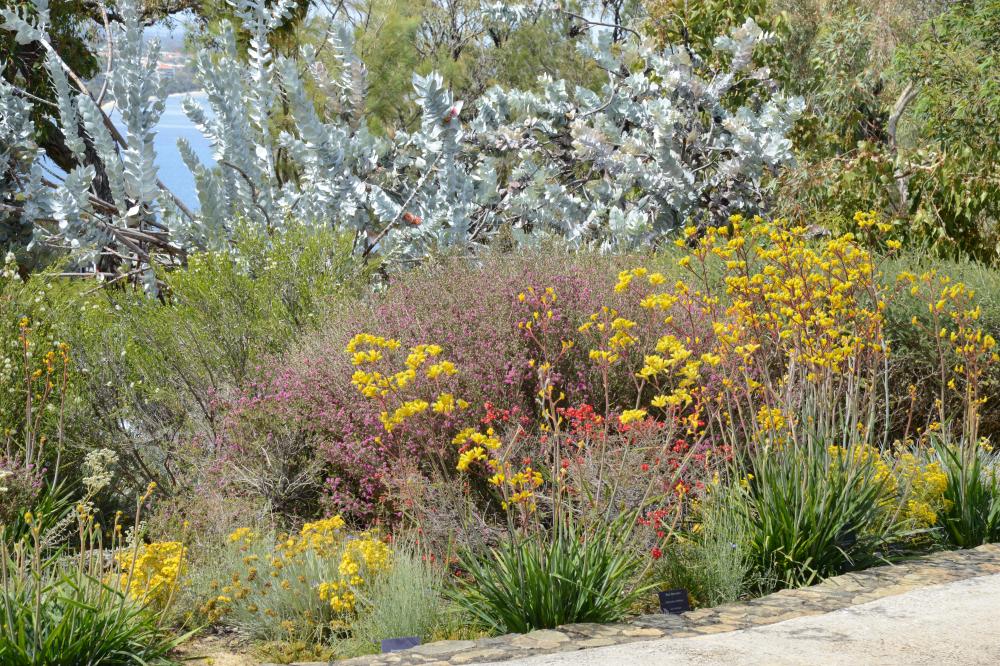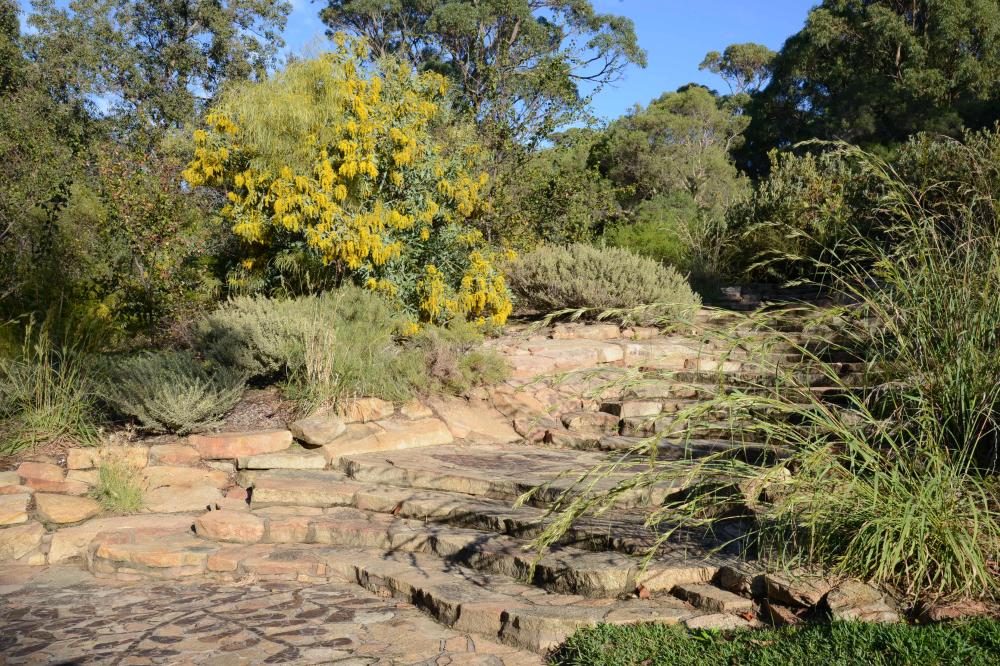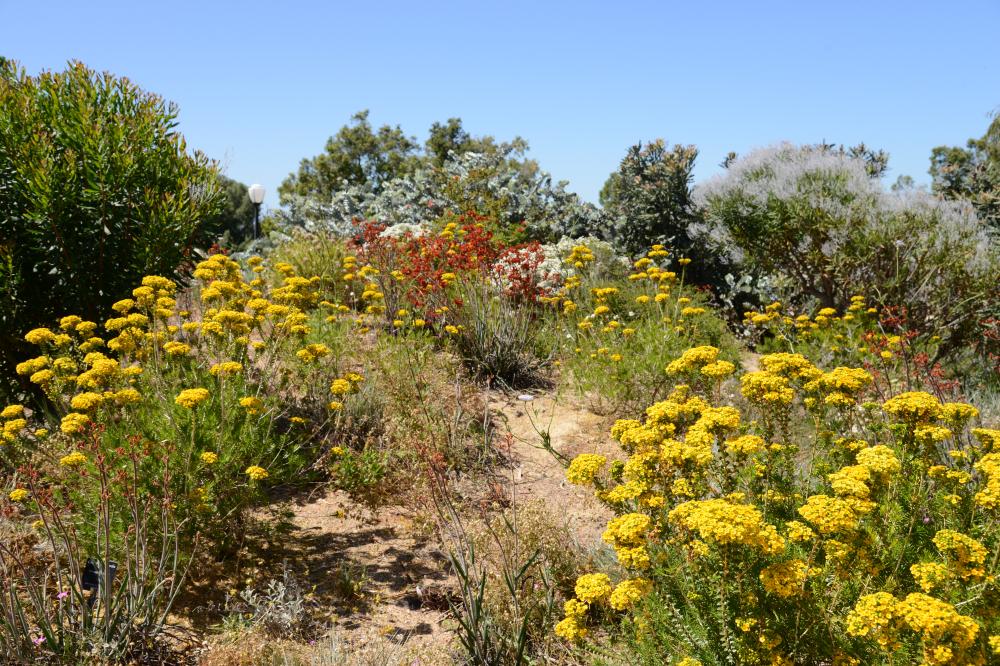Banksia Garden
Magnificent relics from the super-continent of Gondwana! Banksias are uniquely Australian. Of the 76 species recorded nationally, 62 are endemic to Western Australia, making this genus a justifiable source of local pride.
The 2800 square metre Banksia Garden contains an important and diverse collection of Western Australian banksia species.
An ex situ collection such as this allows for:
- observation in propagation and cultivation practices
- a display of plants of botanical interest
- home garden inspiration
- conservation horticulture of species under threat.
It includes species such as Banksia cuneata (Matchstick Banksia) and Banksia occidentalis (Red Swamp Banksia), both of which are at risk from habitat loss.
Banksias are pollinated by insects and birds. See what pollinators you can spot on the banksia flowers. You may see insects like bees and beetles together with birds like honey eaters, spinebills and wattle birds pollinating the banksia flowers. Did you know honey possums (Tarsipes rostratus) pollinate banksias in the wild at night?
Beyond the plants
Take time to admire the beautiful mosaic marble pavements created by artist Philippa O’Brien to celebrate these sculptural plants. One depicts the five species which grow in the Kings Park bushland - acorn banksia (Banksia prionotes), bull banksia (Banksia grandis), holly-leaved banksia (Banksia ilicifolia), narrow-leaved banksia (Banksia attenuata) and firewood or Menzies' banksia (Banksia menziesii) whose flower is the central motif in the Botanic Gardens and Parks Authority logo.
The local species pavement also features some of the native pollinators - pygmy possum, wattle bird and western spinebill.
Did you know that two thirds of Kings Park is banksia woodland? In fact, the banksia woodland once covered the whole Swan Coastal Plain from Jurien Bay in the north to Dunsborough in the south.


